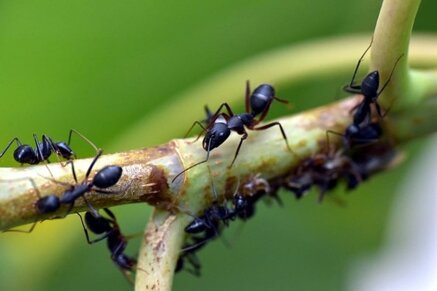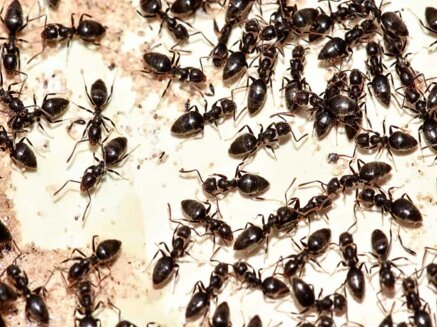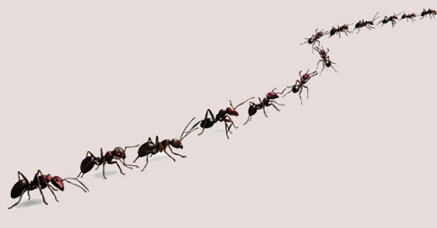Ecopiakos Soluzioni Ecologiche - P.iva 05534520878

ANT
Ant: Common name of the Insects Hymenoptera Apocriti Aculeati Vespoidei belonging to the Formicidi family. They lead social life, with a complex differentiation into castes (eusociality)
SOCIAL ORGANIZATION
The ant society consists of one or more fertile females (queens), sterile males and workers. The queens lose their wings after the nuptial flight and are provided with a copulatory bag in which the spermatic liquid of several males is collected. The eggs may or may not be fertilized; in the first case females will develop, in the second males. These are winged and die immediately after copulation. The sterile, apathetic workers form the nucleus of the colony; sometimes several forms differ: macroergates, large, microergates, small, and dinergates, intermediate, with enormously developed jaws. After the nuptial flight, the fertilized female begins the foundation of a colony: having built a nest, initially with a single chamber, in a suitable place she lays a first group of eggs; until their hatching remains in the nest, and feeds by reabsorbing the wing muscles. The larvae are fed with salivary secretions and give rise to sterile females that begin to carry out the activities of the colony: enlargement of the nest, its defense and care, food supply, feeding of the queen and the larvae, etc. After some time, winged males and females are produced, which will swarm to form new colonies.

DIFFERENCE BETWEEN ANTS AND TERMITES
The Ants and the Termites are insects that are easily confused with each other, let's see the differences: The Ants have folded antennae and an inverted V shape and the wings are two pairs with few veins with the larger front ones.The Termites have straight antennae and four wings are alike and contain many veins. Termites have an abdomen without any narrowing and short legs. Termites have a non-constricted abdomen and short legsDisinfestazione delle Termiti e delle Formiche
The effective fight against Termites must begin with the precise recognition of the Genus and Species to be fought following the identification of the nest and the paths traveled by insects. Monitoring is essential with the use of non-poisoned attractive baits, followed by disinfestation with traps containing poisoned baits. The disinfestation of termites is still time-consuming and requires a high level of professionalism from the exterminator who must be careful in the checks and in the fight itself. For ant disinfestation, insecticide baits in various formulations and gel insecticides are commonly used, which are very attractive for all the most common species of ants. Together with the fight, we must also eliminate the sources that favor infestation such as aphids, decaying wood and food residues in indoor environments.

DAMAGE CAUSED BY ANTS
Ants in the house are not only an aesthetic problem, but they represent a health risk as their continuous search for food sources leads them to enter into contracts with our foods, which therefore risk being contaminated. In other countries there are species that sting or bite, but we are not present here. When the nest is inside the house, the ants can cause serious damage to the wooden structures or insulation, inside which they create their nests and paths to enter and exit. To protect yourself, a systematic approach must be adopted, with the aim of targeting the nest which is the source of the infestation. Intervening only on the few ants that are seen in the house temporarily reduces the problem: in a short time the ants will return. It is useful to carry out inspections of the building or apartment to identify the routes from which the ants enter and move. It is also important to identify the presence of winged ants.


HOW TO PREVENT THE PROBLEM

For prevention, it is necessary to act on the factors that favor or increase possible infestations by ants: poor cleaning and hygiene; stagnation of moisture, wooden structure that touches damp bases, water leaks from pipes; cracks in foundations or upper infrastructure; composition and depth of the soil in gardens; presence of plants infested with honeydew-producing insects (aphids, metcalfa). Therefore: elimination of water losses; elimination of food sources; closing and sealing of cracks, crevices, passages; regular mowing or removal of vegetation around buildings.
Ecopiakos Ecological Solutions - Leading company in Eastern Sicily- P.iva 05534520878
